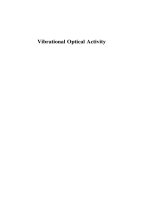Economics principles and applications
Bạn đang xem bản rút gọn của tài liệu. Xem và tải ngay bản đầy đủ của tài liệu tại đây (287.64 KB, 36 trang )
ECONOMICS
Principles and
by
Applications
Robert E.
HALL
ECONOMICS: Principles and Applications, 4e
HALL & LIEBERMAN
© 2008 Thomson South-Western
Marc
LIEBERMAN
PowerPoint Slides prepared by:
Andreea CHIRITESCU
Eastern Illinois University
Chapter 1
What is Economics ?
Overview
• What is economics?
Definition, scarcity, and choice
The world of economics
o
Micro vs. Macro
o Positive vs. Normative
Why and how to study economics
The methods of economics
• Math review
3
Economics, Scarcity, and Choice
• Economics
– Study of choice under conditions of
scarcity
• Scarcity
– Situation in which the amount of
something available is insufficient to
satisfy the desire for it
4
Scarcity and Individual Choice
• Unlimited variety of scarcities, based on
two basic limitations:
1. Scarce time
–
Limited number of hours in each day to
satisfy our desires
2. Scarce
–
spending power
Cannot afford to buy more of the things
we want
5
Scarcity and Individual Choice
• Limitations force each of us to make
choices
• Economists study
– Choices
– Consequences of those choices
– Indirect effects of individual choice on our
society
6
Scarcity and Social Choice
• Society faces a scarcity of resources
• Categories of resources:
– Labor
– Capital
• Human capital
• Capital stock
– Land/natural resources
– Entrepreneurship
7
Scarcity and Economics
• Problems studied in economics: the
scarcity of resources—and the choices it
forces us to make
– Households – have limited income to
allocate among goods and services
– Firms – production is limited by costs of
production
– Government agencies – the budget is
limited, so goals must be carefully
chosen
8
Scarcity and Economics
• Economists study the decisions made by
households, firms, and governments to
– Explain how our economic system
operates
– Forecast the future of our economy,
– Suggest ways to make that future even
better
9
Microeconomics
• Micro comes from the Greek word
mikros, meaning “small”
• Studies the behavior of individual
households, firms, and governments
– Choices they make
– Interaction in specific markets
• Focuses on individual parts of an
economy
10
Macroeconomics
• Macro comes from the Greek word
makros, meaning “large”
• Studies the behavior of the overall
economy
• Focuses on big picture and ignores fine
details
11
Positive and Normative Economics
• Positive economics: how the economy
works
– Can be true or false
– Can be tested by looking at the facts
• Normative economics: what should be
– Value judgments, identify problems, and
prescribe solutions
– Cannot be proved or disproved by the
facts alone
12
Why Economists Disagree
• The difference of opinion may be
positive in nature
– Facts are being disputed
• The disagreement can be normative
– Facts are not being disputed
• When economists have different values,
they may arrive to different conclusions
• Disagreement - over goals and values
13
Why Study Economics
• To understand the world better
– Global events and personal phenomena
• To achieve social change
– Understand the origins of social
problems
– Design more effective solutions
14
Why Study Economics
• To help prepare for other careers
– A wide range of careers deal with
economic issues on many levels
• To become an economist
– Develop a body of knowledge that could
lead you to become an economist in the
future
15
The Methods of Economics
• Use economic models to develop
economic theories
• Economic models are built with words,
diagrams, and mathematical statements
• Economic models
– Abstract representation of reality
– Should be as simple as possible to
accomplish its purpose
16
Economic Models: Assumptions and
Conclusions
• Two types of assumptions:
– Simplifying assumptions
• Essential features can stand out more
clearly
– Critical assumptions
• Affect the conclusions of a model in
important ways
• If critical assumptions are wrong, the model
will be wrong
17
The Three Step Process
• Economists follow the same three-step
process to analyze almost any economic
problem:
– The first two steps explain how
economists build an economic model
– The last step explains how they use the
model.
18
Math, Jargon, and Other
Concerns…
• Economic jargon
– Special words that allow economists to
more precisely express themselves
• Math
– High school level algebra and geometry
• We will covers some of the basic math
concepts that you will need tomorrow
19
How to Study Economics
• Economics must be studied actively, not
passively
• Active study
– Reproduce what you have learned
– List the steps in each logical argument
– Retrace the cause-and-effect steps
– Draw the graphs
– Basic principles
• relate to what you are learning
20
Math Review
•
Tables and graphs
– Tables
– Straight-line graphs
– Curved lines
•
•
•
Linear equations
Lines and curves shift
Shifts vs. movements along a line
21
Tables and Graphs
• TABLE A.1 Advertising and Sales at Len & Harry’s
22
Straight-line Graphs
• FIGURE A.1 A Graph of Advertising and Sales
Sales ($1,000 per month)
54
51
E
39
36
D
C
27
24
B
A
18
2
F
3
6
7
11
12
Advertising
($1,000 per month)
23
Straight-line Graphs
• Slope of a straight line =
Change in vertical variable / Change in
horizontal variable
∆Y
=
∆X
24
Curved Lines
• FIGURE A.2 Measuring the Slope of a Curve
Sales
($1,000 per
month)
1. The slope of this
curve at point B…
32
31
C
27
24
21
18
4. sales increase from 21
to 27 units (ΔY= 6). So
the curve's slope at
point B is =6/3= 2.
H
D
2. is the slope of the
straight line tangent
to the curve at point B.
B
A
3. Along the tangent line,
when advertising
increases from 0 to 3
units (ΔX = 3)
1 2 3 4 5 6 7 8 9
Advertising ($1,000
per month)
25









